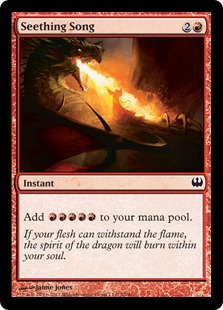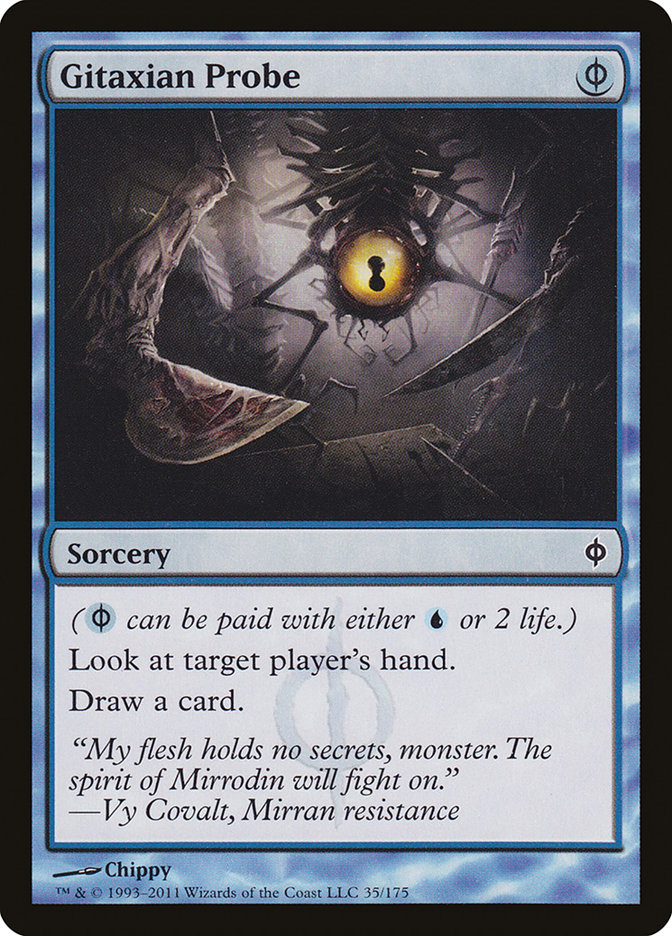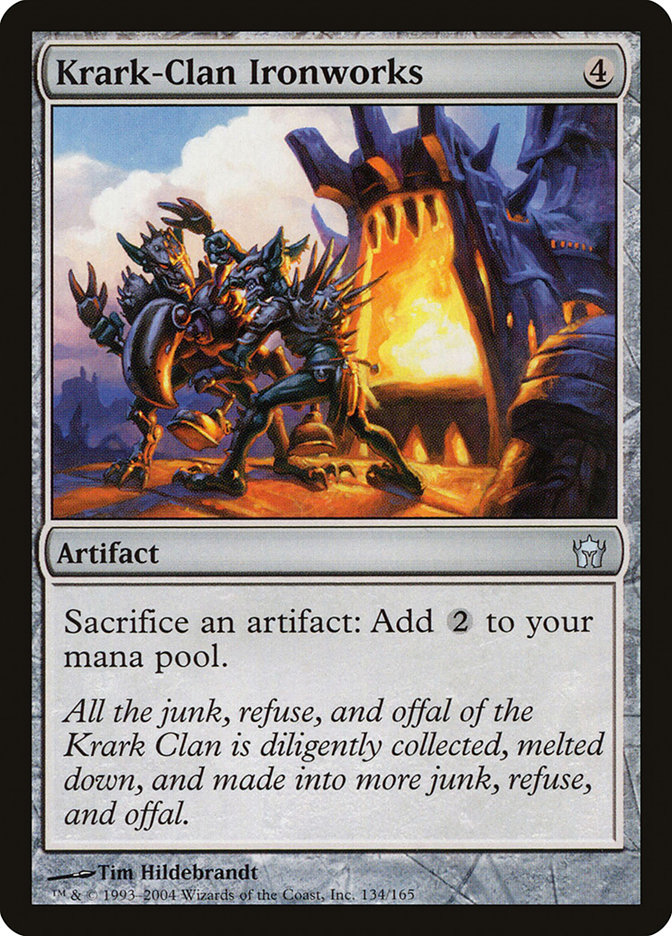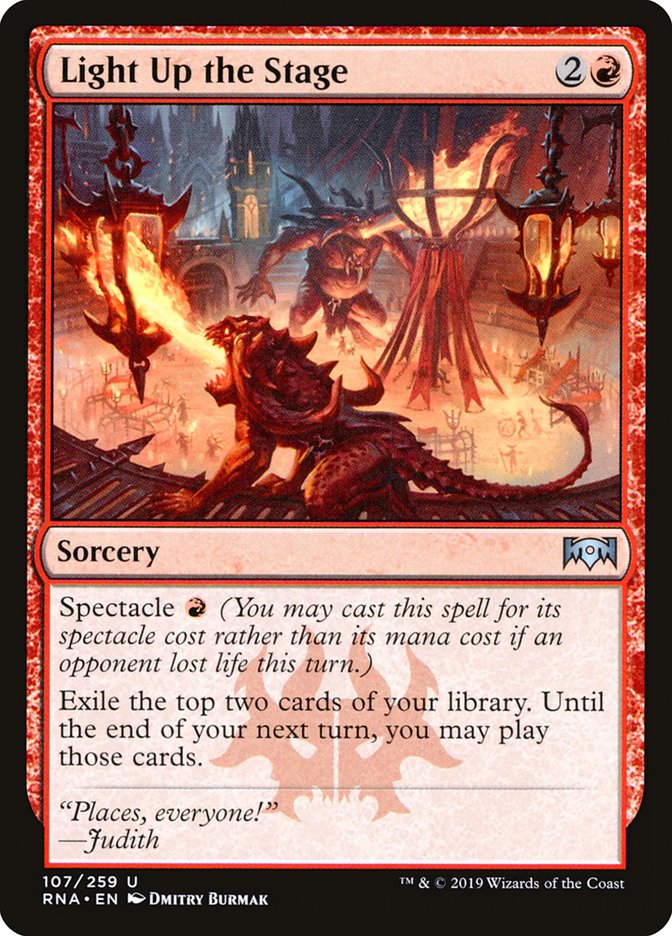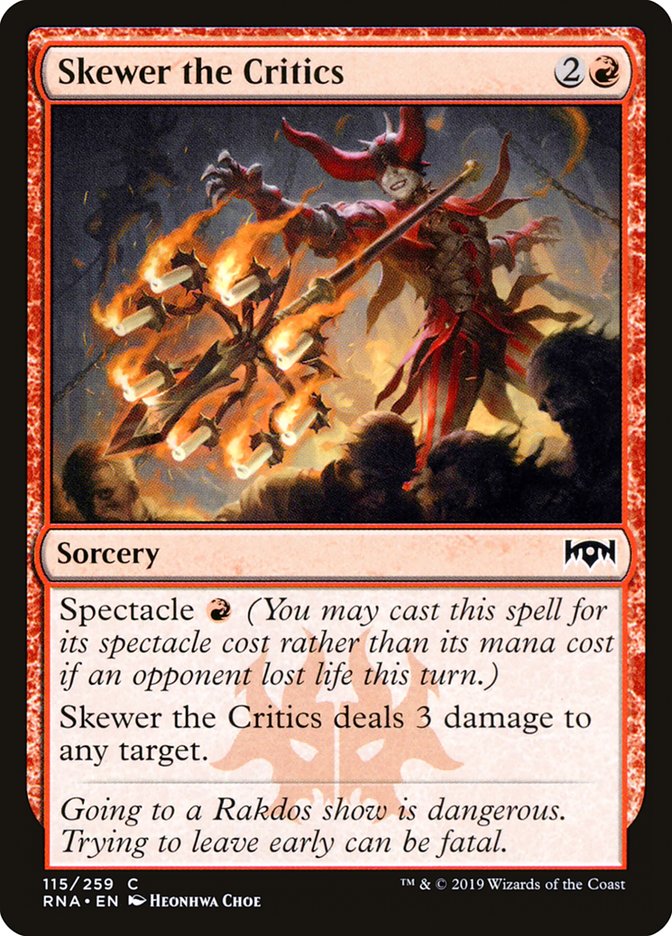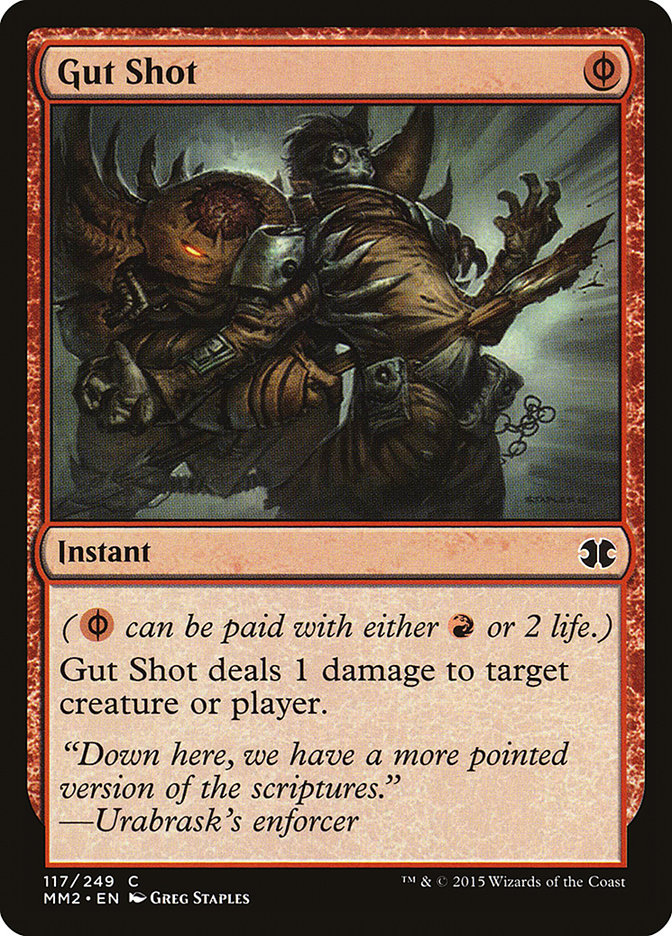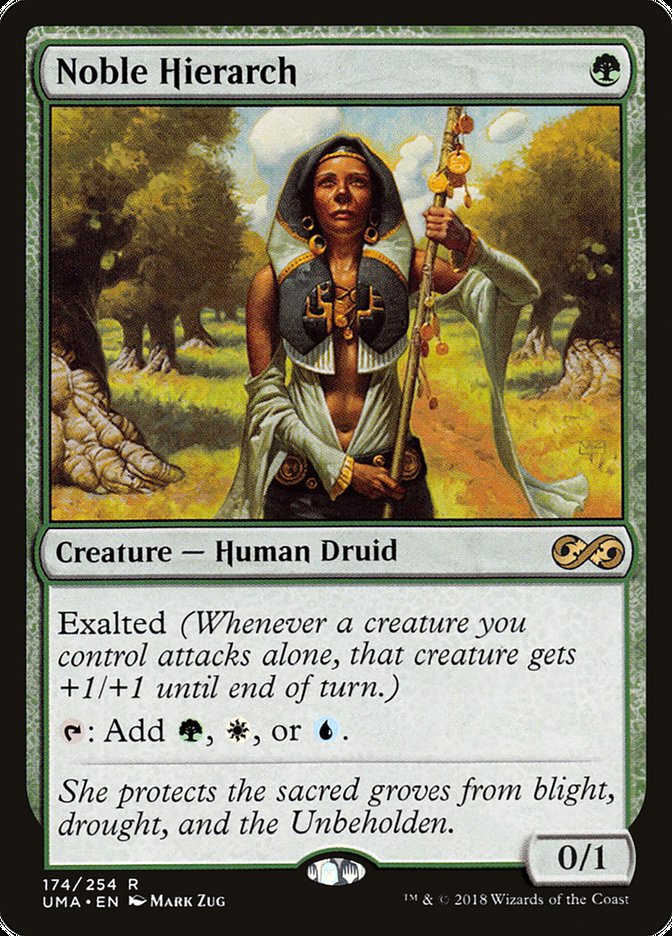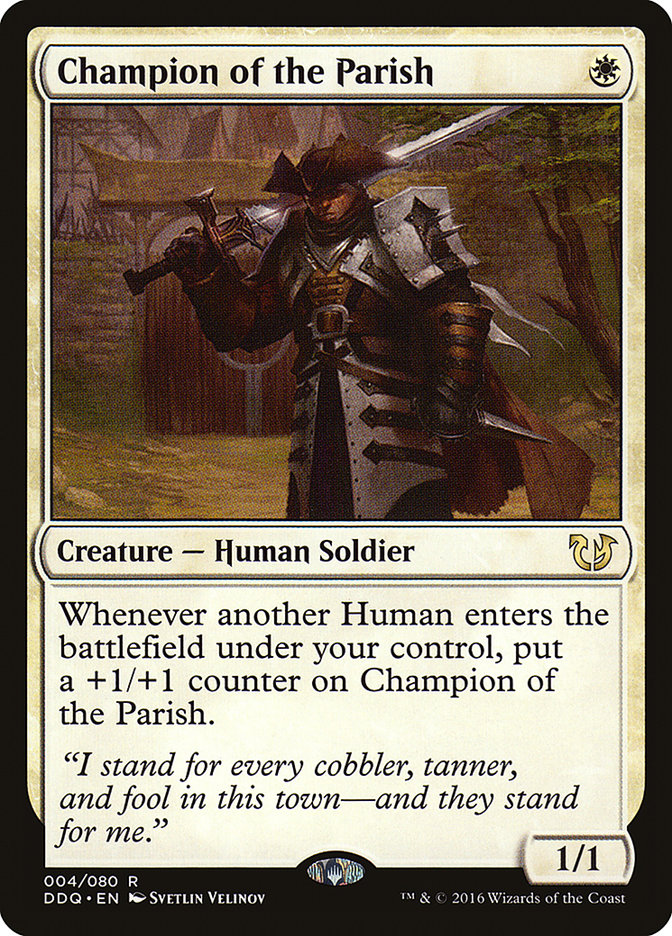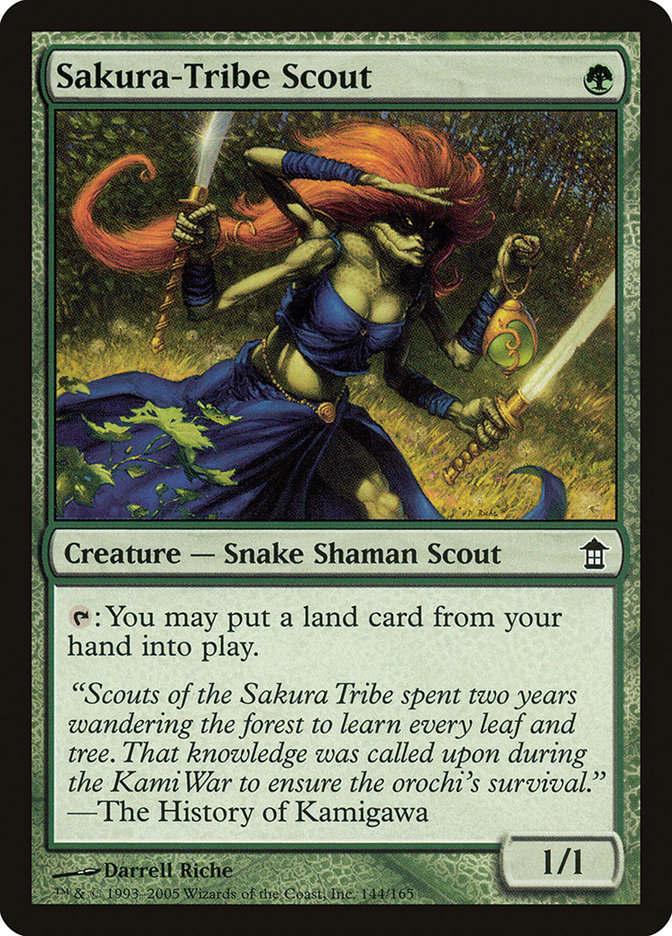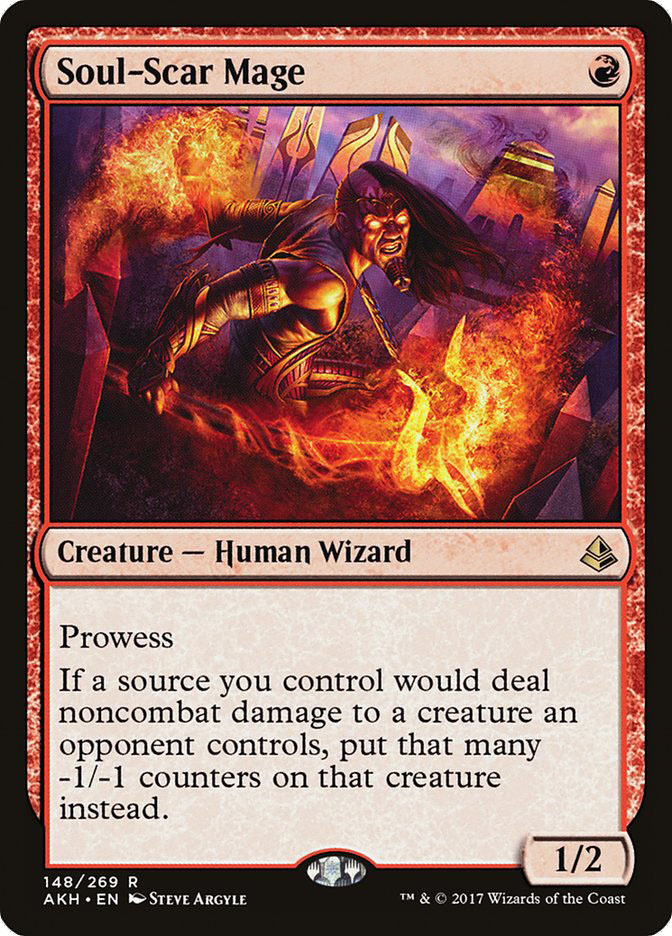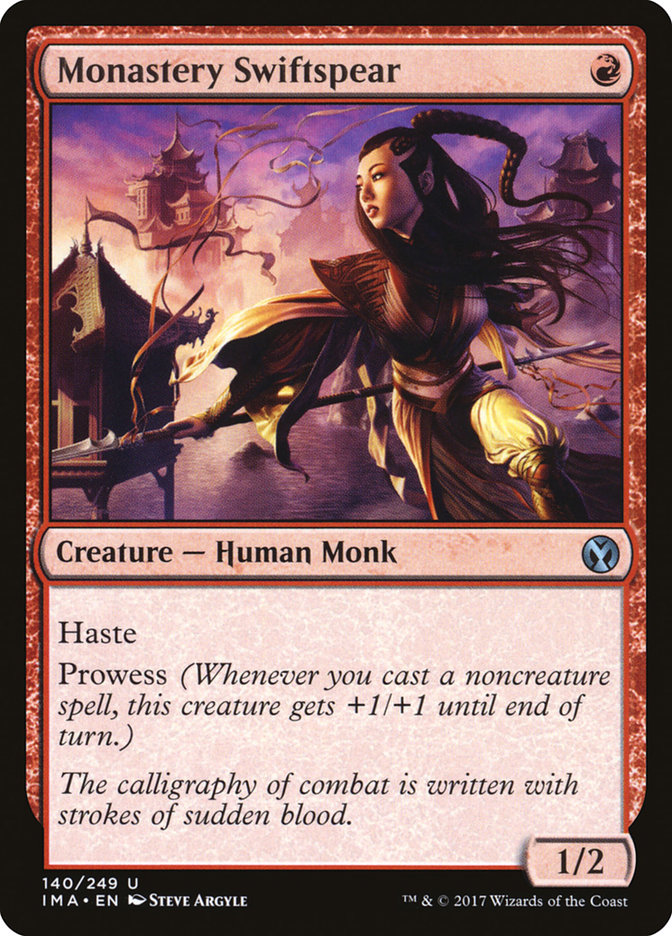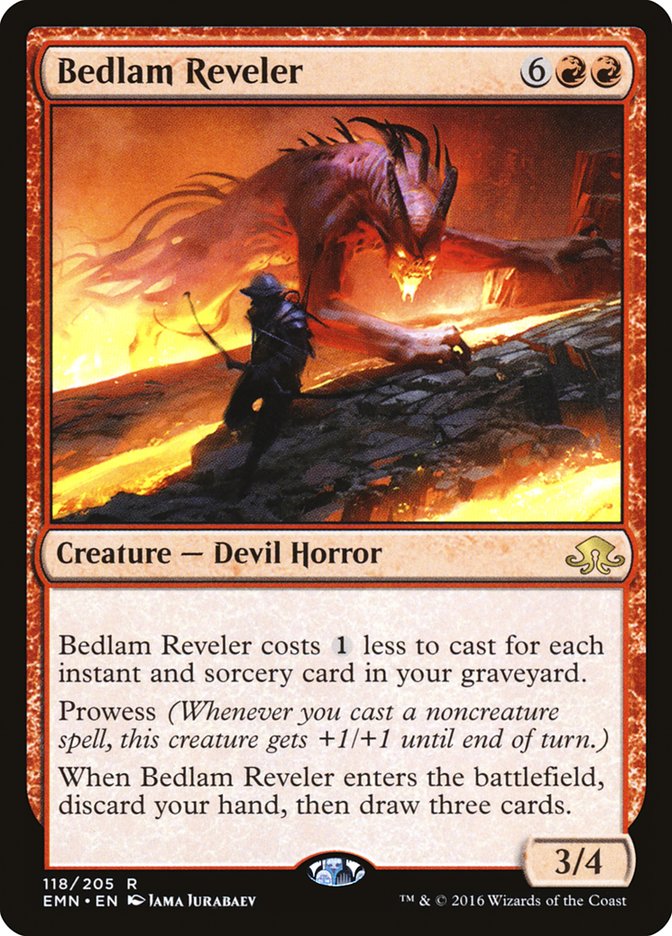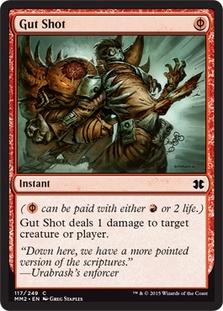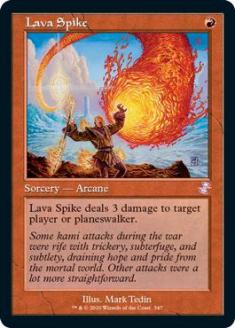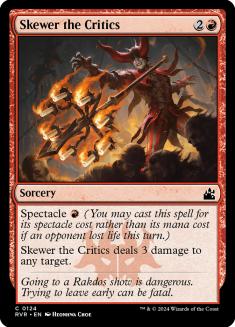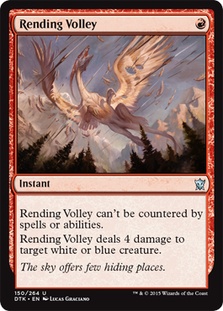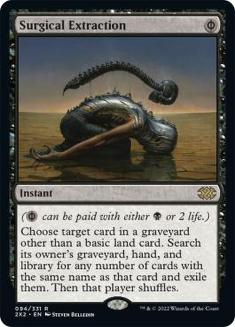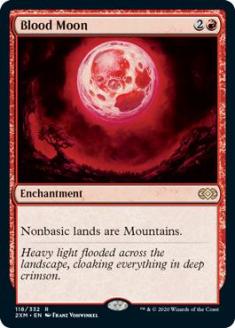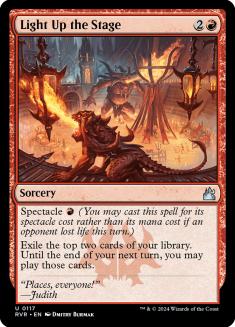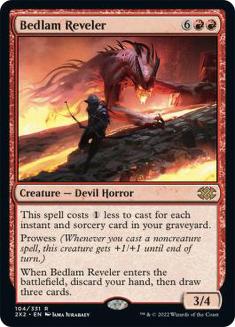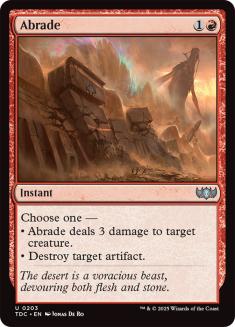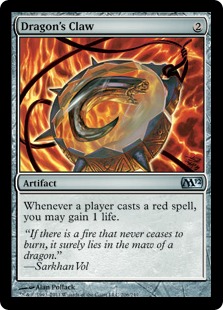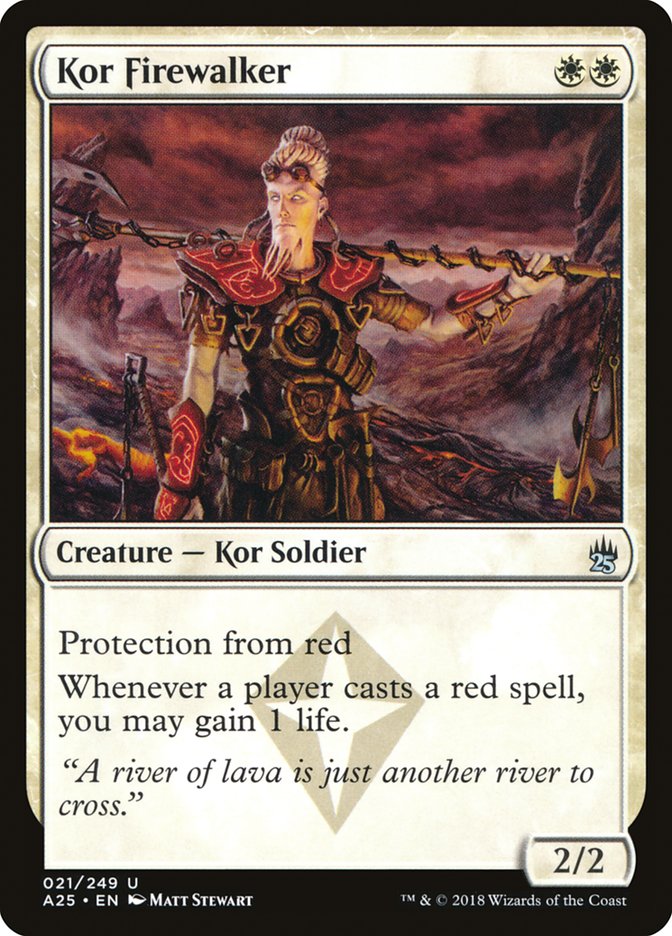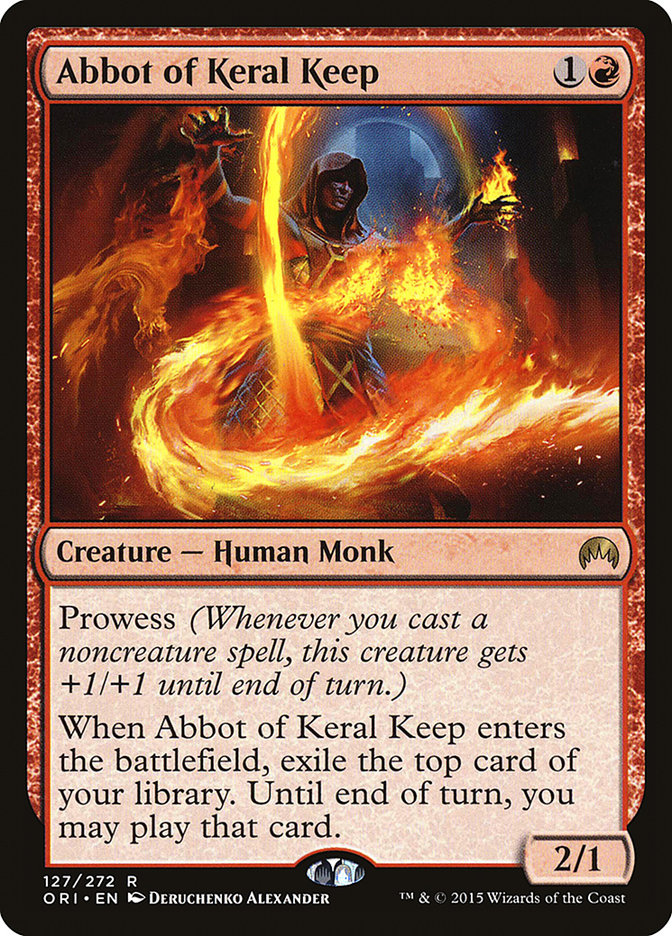“Everyone has a plan until they get punched in the mouth.”
– Mike Tyson
This same logic applies to Modern more so than any other format in Magic, as matches have often been defined by the “Turn 3 kill” for years.
From the early days of Seething Song / Rite of Flame Storm decks to Infect with Gitaxian Probe and most recently Ironworks, many of these decks have led to bannings because of their ability to exploit the most powerful cards in the format. I believe Faithless Looting and Manamorphose are two currently legal cards of the same broken caliber and will one day join the Modern banlist.
It would take a lot to convince me to register a deck that doesn’t play at least one of them or the equally as broken Ancient Stirrings.
Going into the Team Constructed Open in Baltimore, I knew that I wanted to play an aggressive, burn-heavy version of Mono-Red Phoenix that could imitate Iron Mike and just punch people in the mouth before their deck could do its thing.
At the Modern Open in Baltimore last December, I came in second place with a version of Mono-Red Phoenix playing “Modern staples” Tormenting Voice and Fiery Temper.
Spells (47)

That version of the deck had a heavy discard theme, going as far to play cards such as Risk Factor, Maximize Velocity, and Flame Jab, taking advantage of the graveyard as an additional way to cast spells. Graveyard hate such as Rest in Peace and Relic of Progenitus was tough to beat and the deck had some clunky draws where your hand became a wasteland of two- and three-mana cards, of which you could only cast one a turn.
And then Wizards of the Coast released Ravnica Allegiance!
Two new cards from Ravnica Allegiance were a hugeupgrade to Tormenting Voice and Fiery Temper and slotted into the existing shell of Mono-Red Phoenix nicely. It was sad to let go of my two-mana sorcery that gets blown out by countermagic and my three-mana Lightning Bolt, but the show must go on!
Light Up the Stage and Skewer the Critics may be printed with spectacle as their keyword, but their hidden text is “affinity for Gut Shot.” Early on in testing, it became clear that the spectacle mechanic combined with Gut Shot could lead to draws where the Phoenix player could cast five or more spells in a single turn, usually on Turn 3.
Five spells may seem like a high number, but Manamorphose acting as a zero-mana draw-one, plus Light Up the Stage doing its best Thoughtcast impression, do an excellent job of maintaining a high number of cards available to cast and let you churn through your deck at a high rate.
Though there are two turns to play the cards off Light Up the Stage (which I missed the first time I read the card), the importance of four copies of Gut Shot in conjunction with Light cannot go understated. Access to as much mana as possible is important so that the Phoenix deck can deploy all its spells in a single turn. Gut Shot’s Phyrexian mana cost does a good job of imitating Simian Spirit Guide, can trigger prowess, and count as a spell for Arclight Phoenix, all for only two life.
Current Modern decks play a reasonable number of one-toughness creatures, so if you aren’t sold on the four copies of Gut Shot yet, you can kill…
And occasionally get it all at the cost of two life.
We call this Getting The Full Amount by @BasicMountain pic.twitter.com/wCPQ4FbT0O
— Cedric Phillips #SCGDFW (@CedricAPhillips) September 7, 2015
The deck I registered for the Team Constructed Open that I played to a perfect 16-0 record was almost all four-ofs, a deliberate attempt to minimize the variance in my opening hands.
Spells (28)
- 4 Lightning Bolt
- 4 Lava Spike
- 4 Manamorphose
- 4 Gut Shot
- 4 Faithless Looting
- 4 Light Up the Stage
- 4 Skewer the Critics
Sideboard

Four copies each of Lightning Bolt, Lava Spike, Skewer the Critics, and Gut Shot represent 40 total potential points of burn in the maindeck, more than enough when combined with the prowess creatures. From a very basic standpoint, my deck is eight one-drop creatures, sixteen burn spells, twelve card draw spells, four Arclight Phoenix, two Bedlam Reveler, and eighteen Mountains. Thinking about the deck in this manner allows you to realize there are only six different types of cards you have access to, which makes many of the opening hands appear very similar.
The eighteen Mountains and zero copies of Ramunap Ruins, along with the four copies of Dragon’s Claw in my sideboard, were played out of respect for opposing copies of Light Up the Stage and Skewer the Critics. If I didn’t break red in Modern, I figured someone else might have, and taking no damage from my manabase was a huge advantage over many of the other decks in Modern. Many people have asked me if my deck is better than Burn. Though both decks operate very similarly, I believe not having to take any damage to cast your spells is paramount in winning red mirrors, so for that reason I think this deck is currently better than the Burn decks.
Soul-Scar Mage was another new inclusion from my previous list and its role in the deck cannot be understated.
Monastery Swiftspear has been a staple of aggressive red decks in all formats since it was first printed in Khans of Tarkir. What makes Swiftspear so strong is not just the haste keyword but its ability to deal massive chunks of damage when followed up with burn spells like Lava Spike and Lightning Bolt. Where a deck like Modern Burn is constrained by its ability to cast a maximum of two spells on Turn 2 and three on Turn 3, Mono-Red Phoenix having access to Manamorphose and Gut Shot can lead to many more prowess triggers.
Thus, I wanted to play four more copies of Swiftspear.
Soul-Scar Mage acts as copies five through eight of a 1/2 prowess one-drop with all the same previously stated upside. Though Soul-Scar Mage doesn’t have haste, its additional ability is very powerful and important to combat for the deck. Being able to shrink the size of creatures such as Thing in the Ice, Gurmag Angler, and various Spirits and Humans with a Lightning Bolt or Gut Shot (a difficult read for the opponent when you are tapped out) at instant speed makes blocking difficult for your opponent. Being able to bluff attack to enable spectacle for a postcombat Light Up the Stage is a huge Turn 2 play that often enables Turn 3 or 4 kills.
For a deck called Mono-Red Phoenix, I sure haven’t said much about the namesake card. Arclight Phoenix is still a linchpin of the strategy but often comes second to the burn plan. The current version only has two discard outlets in Faithless Looting and Bedlam Reveler, and sometimes having Arclight Phoenix clumps in your hand or stranded off Light Up the Stage can lose you the game.
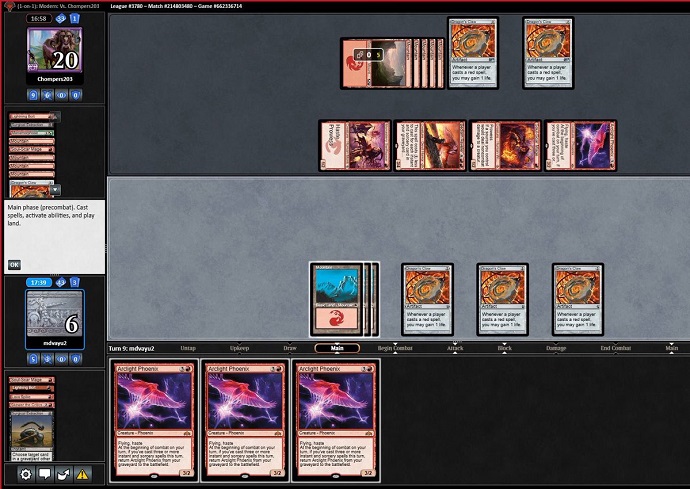
My kingdom for a Faithless Looting!
The reason to still play Arclight Phoenix is that it is very difficult to lose when the deck hits its Looting/Phoenix draws. In addition, Light Up the Stage assists in making sure you play a land each turn, and casting Phoenix on Turn 4 to close out a game in the air often comes up.
A mistake I have seen others make when playing the deck is leading on Faithless Looting Turn 1 without an Arclight Phoenix in hand. Looting should be primarily treated as Brainstorm in this deck, a spell to remove the dead cards from your hand. Casting Looting puts you down a card in hand, and waiting to cast Looting for prowess triggers, to discard or bring back Phoenix, or to find action when your hand is dead is much better than casting it blindly Turn 1 and hoping to hit a Phoenix.
The final card in the deck is Bedlam Reveler at two copies. Multiple Revelers in hand do not play well together, though I wanted to have access to a draw-three effect when I ran out of burn spells to cast. Two felt like the perfect number going into the tournament and even now I would not adjust it.
Using my list from the Team Constructed Open, here is how I sideboard against some of the popular matchups in Modern:
VS Izzet Phoenix
Out:
In:
Rending Volley does a good job of answering Thing in the Ice efficiently and does not get countered by the Dispels and Spell Pierces they bring in. The plan in this matchup is to kill their threats with Rending Volley and use Surgical Extraction to take away their ways to actually pressure us. Most of their deck is air once you Surgical Arclight Phoenix and Thing in the Ice.
VS Grixis Death Shadow
Out:
In:
A common theme with the sideboard games is that they often slow down due to both players having answers for each other’s strategies, so you will see me sideboard out Gut Shot a lot as it is just too low-impact. Grixis Death Shadow is one of your best matchups, if not the best matchup, so the changes are minimal. Blood Moon can be a straight-up knockout blow in the matchup and buy enough time to draw enough burn to kill our opponent.
VS Amulet Titan
Out:
In:
I was trying the Abrade in the matchup, but I found it to be too slow as they often are developed enough on Turn 2 following a Turn 1 Amulet of Vigor. The big things to watch out for in this matchup are Bojuka Bog to remove Phoenixes and reset Reveler, and Summoner’s Pact to get Reclamation Sage for Blood Moon.
VS Humans/Bant Spirits
Out:
In:
Abrade does double duty in killing Aether Vial and their creatures. Thalia, Guardian of Thraben is the best card against you, and your plan is to manage their creatures while attacking with your one-drops or Phoenixes. Blood Moon can be a knockout if their draw does not include Aether Vial, but Knight of Autumn off Vial can completely ruin that plan.
VS Burn (Rakdos or Boros)
Out:
In:
Take out the card that deals you damage and sideboard in the one that gains you life.
VS Tron
Out:
In:
This matchup is extremely favorable and, on the play, you might even be better off just not sideboarding.
VS Dredge
Out:
In:
Creeping Chill is Public Enemy No. 1 here as the Lava Spike deck is poorly suited to beat the deck casting Lightning Helix for free. Surgical’s main priority is to exile all our opponent’s Creeping Chills, with Prized Amalgam and Bloodghast as the other most important targets.
VS Mono-Red Phoenix
Out:
In:
The mirror comes often comes down to who draws more Dragon’s Claws than the other player because of how many spells will be cast. Abrade comes in to answer Dragon’s Claw, but it can be used to kill an opposing Soul-Scar Mage or Monastery Swiftspear. I’m still not exactly sure how many Surgical Extractions to sideboard in, but two feels like the right number to target Faithless Looting and Arclight Phoenix.
Moving forward, beating the mirror and having a better sideboard are the two things that I’m looking to improve upon. I’ll start testing this version:
Creatures (14)
Spells (46)
- 4 Lightning Bolt
- 18 Mountain
- 4 Lava Spike
- 4 Manamorphose
- 4 Gut Shot
- 4 Faithless Looting
- 4 Light Up the Stage
- 4 Skewer the Critics
Sideboard

The maindeck is exactly the same, as I believe it’s the most streamlined version of just trying to get my opponent dead Game 1. I swapped Dragon’s Claw in the sideboard for Leyline of Sanctity, as the current Mono-Red Phoenix deck cannot remove Leyline. Faithless Looting can discard extra copies, and access to Manamorphose allows the deck the ability to actually cast the card if need be. Leyline of Sanctity also gives us an additional tool against decks such as Storm and Ad Nauseam that might begin to see more play if Modern speeds up.
One Rending Volley was swapped to a Dismember for the Hardened Scales matchup, as Welding Jar cannot save a creature from Dismember, and so my deck has more than zero outs to Kor Firewalker.
I couldn’t get the Red Dead Redemption I wanted in Baltimore at the Team Constructed Open, but I have nothing but praise for my teammates Ian Bosley and Josh Everly. I would be remiss if I didn’t give them the praise they deserve, as I have known both for most of my life. They have taught me most of what I know about Magic and were a huge part of my testing process. Both Ian and Josh won some incredibly close matches to even allow me to play sixteen rounds!
Congrats to Jacob Hagen, Ryan Overturf, and Liz Lynn on their win in Baltimore. The finals came down to the wire and made for one of the most intense sets of matches I have ever played! Personally, I will be looking to pick up my own trophy at Baltimore’s #SCGRegionals in a few weeks. Until then I will continue testing and trying to improve on the Mono-Red Phoenix archetype.
But like Abraham Stein told me after the Open, “There’s always Red Dead Two.”


